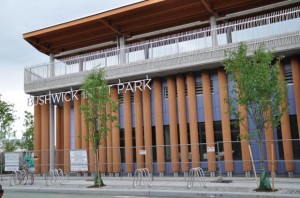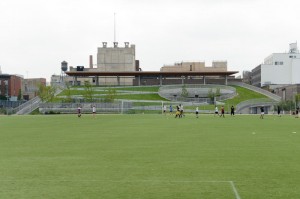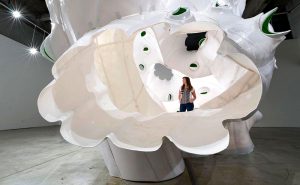Tag: sustainable-architecture
November 22, 2016
Nature Does it Better: Biomimicry in Architecture and Engineering
by Zack Mortice The most important convergence of design and biological sciences today relies on “innovation” that’s millions, if not billions, of years old. Biomimicry is the imitation of the models, systems, and elements of nature for the purpose of solving complex human problems; biomimicry in architecture and manufacturing is the practice of designing buildings and products that simulate or co-opt processes that occur in nature. There are ultrastrong synthetic spider silks, adhesives modeled after gecko feet, and wind-turbine blades that mimic whale fins.“The way biological systems solve problems is pretty different from the way engineered systems solve problems,” says Peter Niewiarowski, biologist at the University of Akron and its Biomimicry Research and Innovation Center.
Human-designed solutions, he says, are crude and additive. They rely on using more materials or energy to accelerate reactions—both costly expenditures. Natural processes rely on unique geometry and material properties… Read more at RedshiftJuly 8, 2014
Explore Bushwick Inlet Park with GreenHome NYC
INVITES YOU TO
Date: Thursday, July 24th 2014
Time: 6:30 PM
Cost: Suggested Donation of $5
Join us on Thursday, July 24th for a special after-work tour of the newly renovated Bushwick Inlet Park. Once a brownfield site located on the East River, this park has been transformed into one of the greenest spaces in the City and was recently honored by the American Institute of Architects (AIA) as one of 2014’s top ten examples of sustainable architecture. It is now home to numerous playing fields as well as Parks Department offices and various community spaces. Designed by the architecture firm Kiss + Cathcart, with landscape architecture by Starr Whitehouse, the site contains ground source heat pump wells, rainwater harvest and storage, and drip irrigation for the green roof. Half the total energy used by the main building is generated by an onsite solar pv system. The park site encompasses almost 30 acres of land and surrounds Bushwick Inlet, a narrow, protected remnant of Bushwick Creek.
It is now home to numerous playing fields as well as Parks Department offices and various community spaces. Designed by the architecture firm Kiss + Cathcart, with landscape architecture by Starr Whitehouse, the site contains ground source heat pump wells, rainwater harvest and storage, and drip irrigation for the green roof. Half the total energy used by the main building is generated by an onsite solar pv system. The park site encompasses almost 30 acres of land and surrounds Bushwick Inlet, a narrow, protected remnant of Bushwick Creek.
 Guests will be treated to a behind-the-scenes look at the park’s green amenities as well as an in-depth discussion of the design and implementation of the park’s transformation. After the tour, guests are invited to continue the conversation over drinks at a nearby location TBD.
Guests will be treated to a behind-the-scenes look at the park’s green amenities as well as an in-depth discussion of the design and implementation of the park’s transformation. After the tour, guests are invited to continue the conversation over drinks at a nearby location TBD.
Space is limited.

